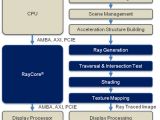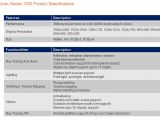Korean company Siliconarts has just announced the world’s first real-time ray tracing GPU. The company is getting ready license the IP as it likely lacks the funds to manufacture its own hardware implementation.
Ray tracing is a very difficult processing procedure that can transform traditional rasterized 3D graphics into renderings that rival real life images.
The procedure has been known for years and it is usually done in software for big animated Hollywood productions, but such an effort requires thousands of hours of ray tracing processing and playing in real-time a ray traced game seemed impossible at the time.
Processors and graphics processing units are now much more powerful than they were a decade ago, but even so, ray tracing is still not the main goal for hardware makers so the current hardware is not really the best tool for it.
Moreover, it’s not only that the current hardware is not ray tracing optimized, but it lacks the specific features and the necessary power to be able to allow games to enjoy real-time ray traced games.
Siliconarts is touting some performance numbers and it claims that its design is the absolute fastest, but we don’t have any real benchmark numbers so we’ll take the statement with a grain of salt.
The company’s CEO, Mr. Hyung Min Yoon commented on the features of the new IP as follows:
"The key feature of this product is that ray tracing, which was considered impossible to implement using hardware, is now available not only on PCs and servers, but also in diverse devices such as smartphones and smart TVs. None of the global GPU companies have successfully implemented ray tracing on a real-time basis and their technology level is still trivial. It is almost impossible to implement."
Siliconarts says that it already is in talks with a company for an IP license agreement and also talks about ray tracing in mobile applications such as smartphones and tablets.
We’d really like to see this happening as soon as possible, but until we see it, we’ll take this just as any other ray tracing “breakthrough” from the past decade.

 14 DAY TRIAL //
14 DAY TRIAL // 

